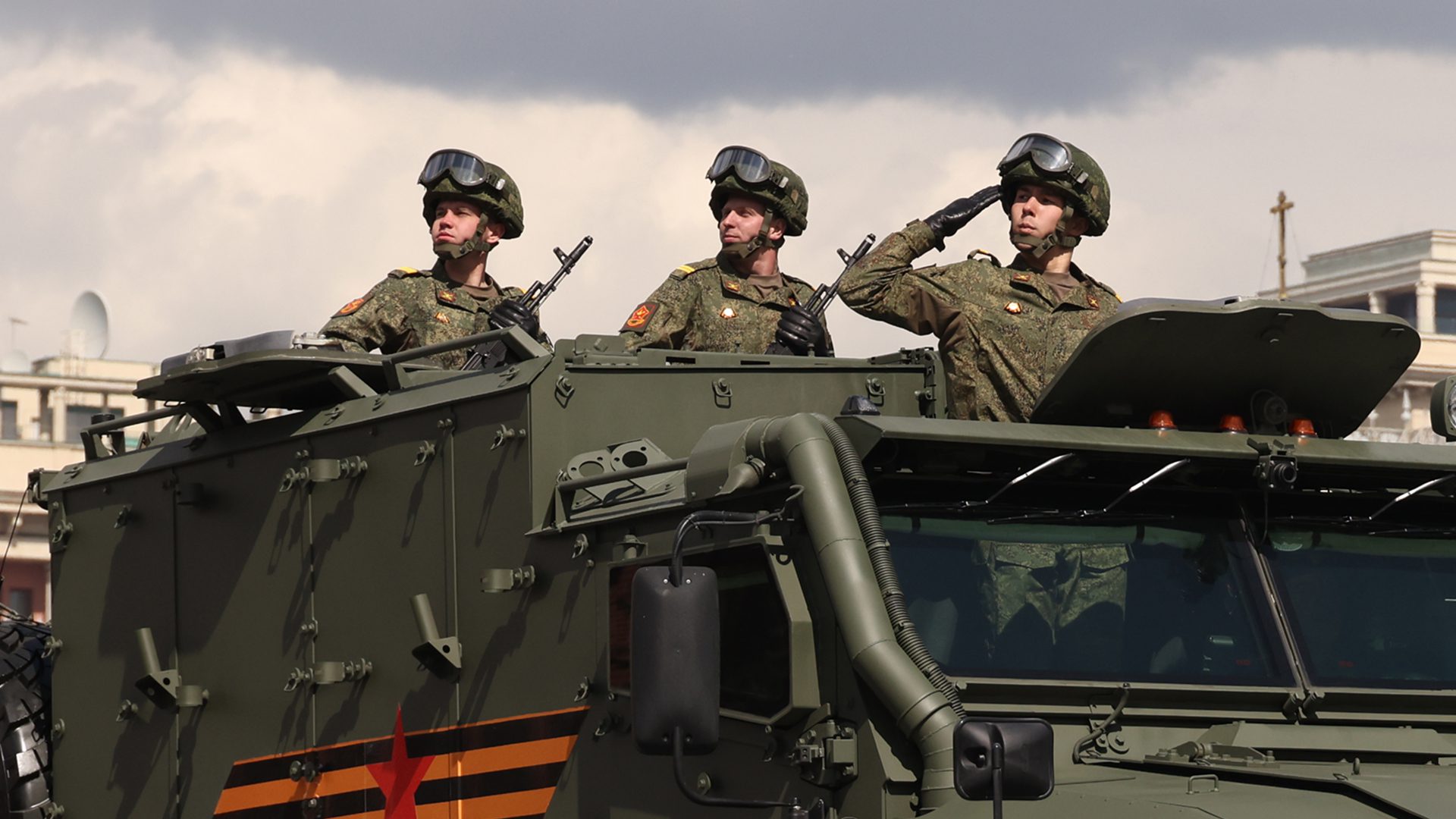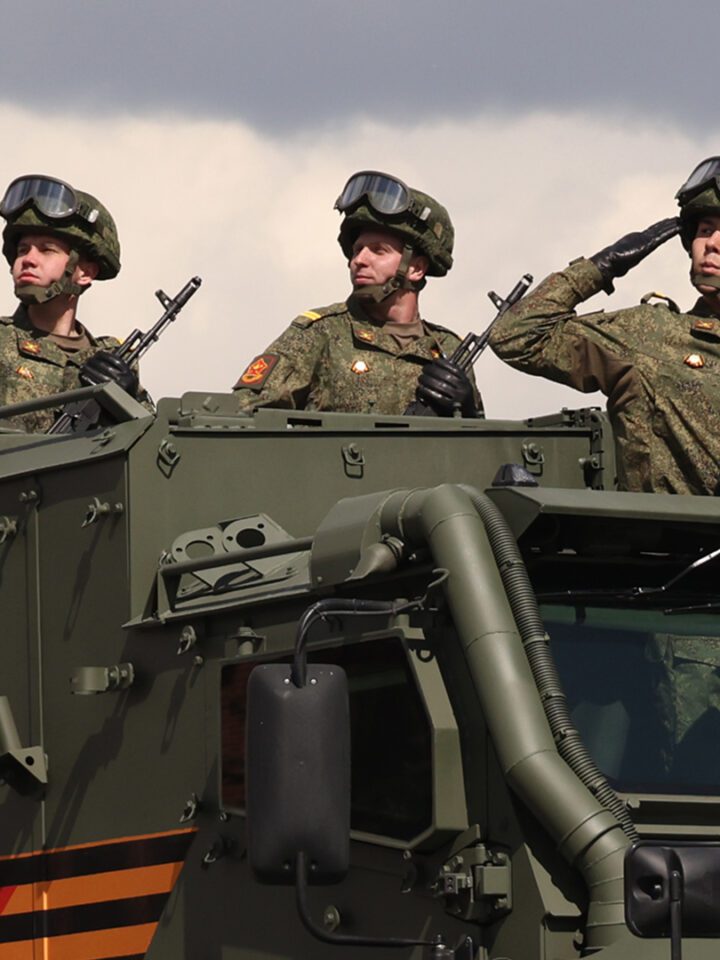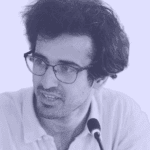Russia faces a protracted military overhaul following the setbacks of its campaign in Ukraine – from poor morale and outdated training to degraded equipment and over-centralised command. Despite some battlefield adaptation, deep structural, economic and demographic constraints limit reform, reinforcing reliance on mass, firepower and nuclear deterrence.
Executive summary
- Russia’s war in Ukraine has exposed deep structural flaws in its military, including poor morale, outdated doctrine, leadership failures, inadequate logistics, and over-centralisation – forcing a painful process of tactical adaptation.
- Despite these shortcomings, Russia has stabilised its battlefield performance through partial mobilisation, increased defence spending, industrial retooling, and heavy reliance on drones, glide bombs, and mass artillery.
- Putin has outlined reform priorities focused on nuclear deterrence, digitisation, unmanned systems, and rearmament, but his approach remains cautious, equipment-centred, and constrained by economic, demographic, and institutional limits.
- Russia faces significant obstacles to reform, including a rigid command culture, fear of political transparency, inter-agency infighting, labour shortages, and an underperforming defence-industrial base that relies on foreign technology.
Introduction
Russia and its Armed Forces have had a very difficult three years. Strategic goals established in 2022 by President Putin for Ukraine to be ‘denazified’, demilitarised, to accept partition and adopt permanent neutrality have not been achieved. After failing to decisively defeat Ukraine in the initial period of the war, the army has ended up fighting a long war of attrition for which it was wholly unprepared.
Putin’s strategic blunder has come at enormous political, economic, societal, and military cost. Russian defence spending has increased to around 6.5 per cent of GDP in 2025, up from around 4 per cent in 2022. The US Defence Intelligence Agency has reported that, since invading Ukraine on 24 February 2022, Russia has lost at least 10,000 ground combat vehicles, including more than 3,000 tanks, as well as nearly 250 aircraft and helicopters, and more than 10 naval vessels. The UK Ministry of Defence said on 8 May that Russians had likely (55–75 per cent probability) experienced over 950,000 casualties to date, including 200–250,000 soldiers killed. It is anticipated that this figure will cross one million shortly.
Putin shows no sign of changing course. He appears ready to tolerate the glacial pace and huge cost of Russian military advance, continuing a strategy of attrition to degrade ‘Ukraine’s ability and will to resist through 2025’ and to allow him to impose peace terms.
However the war ends, it is clear Russia faces a lengthy, difficult and expensive period of national military reform, the third of Putin’s misrule. This is already being shaped by measures taken to address significant tactical and operational shortcomings in Ukraine.
This analysis sets out key Russian military shortcomings, reviews actions taken to date, sets out strategic lessons identified by Russia, and explores obstacles to their implementation. It focuses on the Russian ground forces and is not a comparative analysis with NATO.
The Russian military in Ukraine
Putin was confident of swift success. Over a decade he had lavished billions of dollars on the Russian military to implement a strategy of ‘active defence’ to deter outside attack and preemptively neutralise threats to the state’s security. Under Defence Minister Shoigu, steps were taken to improve service conditions, increase pay, and address readiness, recruitment, and rearmament. Emphasis was placed on professionalism, long-range precision strike and other indirect capabilities, while slowly upgrading Russia’s nuclear (both strategic and non-strategic) and general-purpose forces. Shoigu improved the management capability of the Russian armed forces, streamlined command-and-control arrangements, revised and enlarged the exercise programme, including ‘snap’ exercises to test force readiness, and ran large, annual, strategic-operational exercises. Modernisation was deemed ‘complete’ in 2021, albeit without clear metrics against which this was measured.
In practice, Putin’s new-look army, designed for quick, defensive and low-intensity wars of necessity rapidly turned to dust in a slow, offensive and complex war of choice. Hubris prevented Russia from anticipating either Ukrainian readiness to fight or the reaction of the West. The allegedly ‘modernised’ force of February 2022 was neither a NATO-style permanent readiness army nor a Soviet-style one based on mass, conscription and mobilisation.
The army struggled with the consequences of its high-risk and botched invasion, its systemic shortcomings, and a lack of manpower due to a preoccupation with achieving a swift victory. It rapidly disintegrated into a disparate, uncoordinated and squabbling force of regular soldiers, volunteers, mercenaries and Chechen irregulars. In early 2023 the Russian Armed Forces regrouped, switched to the defensive, shifted to a more methodical approach rooted in its military past, and began to adapt. This allowed it to successfully defend against the Ukrainian offensive of 2023 and regain and then retain the tactical initiative in 2024 and 2025.
Yet, despite this limited progress and considerable tactical and operational adaptation, it has not yet been able to turn tactical success into that at the operational and strategic levels. As the army has shifted to improvising and then forming a follow-on-force through partial mobilisation of older, inexperienced and less trained volunteers, overall quality has also reduced.
Key Russian shortcomings
The most important tangible and less measurable shortcomings observed within the Russian military over the last three years are summarised as follows:
Moral
- Morale. Shaky morale within the Russian army, due to senior secrecy, disregard for high casualty levels, indifference by officers for the well-being of their subordinates, endemic corruption, inadequate medical care, poor pay and conditions, arbitrary violence, inter-ethnic conflict, insufficient or poor equipment, and harsh discipline, has impacted overall combat effectiveness. Poor morale has been exacerbated by high-casualty tactics and ‘stop-loss’ programmes ‘to prohibit soldiers from resigning and bolster the number of soldiers available, including by forcing wounded soldiers back to the front lines’.
- Leadership. Loss of experienced personnel has been particularly detrimental. Many of the casualties ‘have been among elite and professional soldiers, as well as in junior officer corps’. Their replacements are of generally lower quality or drawn from the ranks, have less training in understanding and implementing higher orders, and display weaker leadership, further eroding unit cohesion and effectiveness.
- Poor discipline is evidenced by war crimes, murder and abuse of Ukrainian Prisoners of War and civilians, drug and alcohol abuse, refusal to fight, and use of anti-retreat troops and Russian military police to harshly enforce order.
Conceptual
- Ends not aligned with ways and means. As predicted in 2004 by a former deputy chief of the Soviet General Staff, ‘there was again a mismatch between the desired political ends and military means made available in the early period of the war, forcing the Russian military into a painful period of adaptation, restructuring, and reconstitution’. This mismatch has been an enduring military problem since the Crimean War.
- Failure of strategic intelligence and assessment. The decision to invade was based on a faulty assessment about Ukraine’s willingness and readiness to fight. Disputes between the various intelligence services and reluctance to communicate accurate information led them to feed Putin with the information he wanted to hear. This pattern has been repeated since, not least when the Russian intelligence services failed to anticipate Ukraine’s attacks in Kharkiv and Kherson Oblasts in 2022 and its incursion into Kursk Region in 2024.
- The role of theory. The Russian military pursued a flawed strategy of seeking to recreate their 2014 ‘blitzkrieg’ of Crimea, relying on indirect and non-military tools to ‘deter’ Ukrainian resistance, supported by ‘minimum armed strikes, ostensibly freeing Russia’s military from the need to create local overmatch’.
- Insufficient troops to task. Russia’s strategic overreliance on indirect and non-military tools led it to adopt a lean, loose force structure suitable to rapid intervention operations and unsuited for protracted conventional operations.
- Inadequate preparation. The flawed Concept of Operations of a ‘coup de main’ played a deleterious role in preparing Russian troops psychologically, materially and organisationally for the reality of what awaited them in Ukraine. It also encouraged the invading force to deviate from the Russian army’s established principles of war, in particular high readiness, concentration of force, unity of command, and understanding.
- Over-centralisation. Despite attempted reforms to increase lower-level leadership and encourage initiative, ‘the Russian military continues to operate with a Soviet-style centralised command. This centralised command style at the tactical level has contributed to the types of inflexible operations that led to previous failures and casualties’. Excessive centralisation is the result of a lack of trust between various leaders, echelons and services, leading to the slowing of operational tempo, a lack of unity of effort, and competition for resources.
- Lack of responsiveness. The military higher education system is outdated, lacks intellectual rigour and student assessment, is narrowly single-service, and favours memory of facts over independent thought. This compromises joint force integration, continued employment of poor officers, and leads to an inability to adapt and a reluctance to delegate. The army in Ukraine remains prone to sticking to a chosen course of action, even if this proves unsuccessful, and is highly fratricidal.
Physical
- Inadequate military skills. The effectiveness of tactical and operational command and individual use of equipment is compromised by the Russian military training system. Training problems have persisted for a ‘variety of reasons, including procedural rigidity, inadequate equipment and ammunition, and lack of standardisation because of an emphasis on in-house training within units’. This relies on the willingness and ability of commanding officers to organise training and to certify it honestly. There is no independent assessment. Training lacks realism and is heavily scripted.
- Lack of military digitisation. Much of the Russian military remains analogue without an ‘unified information network’. This, combined with a widespread lack of digital communications, has further slowed decision making within a hierarchical system, compromised situational awareness, degraded kill chains, and further hampered force cohesion.
- Logistics, equipment and supply chain issues. The Russian military invaded with formations that lacked self-sufficiency and were unprepared for prolonged combat operations. Logistical support could not keep up with, or scale to, the operation being conducted in the early days of the war. Russian efforts at recovery, repair, and replacement have appeared overwhelmed at times. Russia’s military-industrial capacity was likewise ill prepared for mobilisation in support of a prolonged war of this type, with little done to prepare it in advance. In many areas, Russian equipment proved inferior to western analogues and remains dependent on foreign imports.
Russian adaptation
Many of these key shortcomings have been recognised by Russia. Its inability to achieve a swift victory in 2022 and a pivot towards a prolonged campaign have driven a process of adaptation. These changes have, however, been in reaction to events on the battlefield, rather than being anticipated and driven proactively by the General Staff.
In the field, Russia has refilled its ranks, adapted structures, adjusted its tactics including those to reduce the rate of casualties, improved its own defences while targeting those of the Ukrainians with glide bombs, and streamlined its logistics despite Ukrainian attempts to interdict them. It has also sought to implement improvements in military health care, albeit from a very low baseline.
The Russian military-industrial complex has increased production and proven resilient to sanctions. It however continues to have capacity issues, problems with access to technology, skills, tools and components, and suffers a shortage of skilled labour which limits output and leads to a focus on quantity rather than quality. Production of newer generation equipment has been sidelined at the expense of modernising or repairing older, trusted equipment. Capacity will be switched to production of new equipment when reserves for refurbishment have been exhausted, albeit at a lower output.
The Russian army has reduced the time between finding and striking short- and long-range targets through upgrading of its C2 (Command and Control) and communication systems, improving processes and rapidly adopting unmanned air systems. These have proven to be cost-effective tools to detect enemy movements, and provide artillery targeting assistance. FPV (first-person view) drone lethality has also increased as Russian operators become more efficient at their use. On the ground, unmanned vehicles have been deployed to assist troops, for example with logistics and evacuation under fire. The targeting process for attacking Ukrainian critical national infrastructure has improved, with this much more focused on higher impact targets than at the start of the war.
The need to adapt and the rapid expansion of the Russian defence budget has driven new leadership. As the new Defence Minister, Andrei Belousov, has led efforts to rationalise military spending, streamline Ministry of Defence (MoD) management processes, and focus on innovation and new technical solutions. This included support for a ‘national’ (government and private) military-industrial complex and formation of the new unmanned systems troops to focus further development of unmanned aerial vehicles (UAV). A recently appointed Commander of Russian Land Forces signals the intention, as one US expert put it, to ‘integrate experience from the war…[in] force posture/employment, training, readiness and other areas critical for reconstitution [of] the army’. A new Navy commander is charged with doing much the same.
Putin’s priorities
At the end of 2024, in line with key lessons identified, Putin established objectives for further development of the Russian Armed Forces to ‘enhance army and navy capabilities [note: not air force], to achieve the objectives of the special military operation, and to be prepared to provide a prompt and effective response to potential challenges to our country’s security’. His stated priorities for this were:
- Maintenance of strategic nuclear forces and development of new deterrent systems;
- Detection and interception of medium-range missiles in Europe and Asia-Pacific, and production of Russian analogues;
- Combat training of troops and officers in higher military training institutions. Tactics, individual skills, tactical and operational effectiveness of troop command and control at the tactical and operational levels;
- Development of domestic weapons and equipment, and tactics for their use. Improvement of equipment repair and modernisation;
- A unified information network that integrates reconnaissance and engagement capabilities at the strategic, operational and tactical levels through advanced developments;
- Robotic and unmanned systems;
- Military and military-technical cooperation with allies and partners.
Putin’s three objectives show Russia’s dilemma: continuing to prosecute the war in Ukraine while reforming the military for a potential war with NATO. As fighting continues, focus on sustaining the war is unlikely to allow for adequate MoD and General Staff focus on rebuilding and reconstituting the army. Continuing attrition also doesn’t allow military planners to quantify the baseline and scope for necessary future reform.
In line with his previous equipment-centric pronouncements, Putin’s priorities largely address the physical component, not the conceptual or moral ones, although he also discussed improved social guarantees for troops. His first two priorities reflect the renewed emphasis on Russia’s strategic nuclear, non-strategic nuclear and non-nuclear forces to ensure deterrence, given the damage suffered by its conventional forces and the lengthy rebuilding task ahead.
Putin has signalled a cautious approach to defence reform, saying that consideration of ‘additional measures to ensure the security of Russia and its allies’ will be done ‘carefully and thoughtfully, without becoming drawn into a full-scale arms race that would damage the socioeconomic development of the country’. In his annual address in 2024 he acknowledged the severe strain on Russia of his war in Ukraine citing ‘social, demographic, infrastructural’ problems, resource constraints, and the ‘imperative… to bolster our defence industry’. For this reason, full national mobilisation remains unlikely.
Accordingly, Russia’s political and military leadership will take its time to digest lessons from Ukraine before substantial change is implemented. While a precise vision of the future has still to emerge, it is almost certain that the Russian leadership will seek to enlarge the force and reestablish a structure suited for fighting large land wars. This will capitalise on extensive experience from Ukraine especially unmanned systems, higher military education, and public management improvements in the MoD and headquarters. The goal will be to bring the military sphere closer to the civilian one, in terms of education standards, public procurements, controlling costs, and quality of production. Despite official statements, the centrepiece will not be widespread innovation and modernisation.
The timescale, shape of and equipment for a reformed Russian military may start to become clearer this year with the promised publication of a revised 10-year Strategic Armaments Plan. This timescale is aligned with a statement by Belousov in December 2024 that the Russian military must achieve ‘full readiness for any development of the situation in the medium term, including a possible military conflict with NATO in Europe in the next decade’. A ten-year timeline was taken for the previous round of modernisation and can be assumed to be the baseline scenario for the MoD and General Staff. A revised Military Doctrine is also long overdue. This will also incorporate lessons from the war which has outpaced the current 2014 version.
Obstacles to reform
Russia faces several obstacles that constrain how and how far it can rebuild its armed forces. These are summarised as follows:
Political and cultural
- Any army is a reflection of the society from which it is drawn; Russia is no different. The national mood is defensive and towards further conservatism, insularity, traditionalism, and nostalgia about past military glories. This mood will influence future force design and hinder Russia’s ability to adapt to modern warfare. Fear of exposing and discussing in public the realities of the road to war and its conduct discourages analysis and will skew objective decision making. No one outside the presidential administration is empowered to decide or even propose the inevitable trade-offs between quality and quantity to rebuild the force.
- Bureaucratic infighting between rival political, economic and security groups have stymied past military reform attempts. The Russian military itself remains ‘quantity-orientated and commander-centric’. This mitigates against radical change, such as decentralisation, delegation of decision making, and the use of initiative absent orders. As seen in Ukraine, there are positive disincentives including death to challenging authority in a system which rewards loyalty over competence.
- Russia’s strategic culture makes it difficult for the military to ‘make a clean break with the past’ and embrace new approaches, even when operational experience clearly demonstrates the need for such a change.
Economic and demographic
Although continued partial economic mobilisation is sustainable, economic pressures and uncertainty about future macro-economic health will constrain reform ambitions. Russia is also facing stark challenges in its national labour force today, a situation which will, according to the UN, worsen over the medium-term. Generating a larger military force will only exacerbate these tendencies. The Armed Forces alone will require at least half a million additional personnel – mostly men – above its prewar level to reach a force of 1.3 to 1.5 million. Given the high numbers of killed and wounded in Ukraine, this figure is probably an underestimate.
Industrial
The Russian military-industrial complex has proven able to date of supplying the army with the equipment and weapons it requires to sustain the war in Ukraine. These investments will aid rearmament. However, the sector remains plagued with capacity issues, high costs, limited access to technology, poor management, and corruption. There is little to suggest that it will be able to produce advanced weapon systems or increase production substantially over the longer-term to fully reequip the army. Military industry is also likely to require access to external technologies, especially from China or via sanctions avoidance.
Personnel
Impacts of the war on future military retention are currently masked due to wartime policies that prohibit servicemen from resigning. Russia resorts to providing higher wages and social benefits to attract wartime recruits, but maintaining this high spending in the post-war period will add additional pressure on an already high defence budget.
Conclusion
The Russian armed forces face a long period of rebuilding to incorporate lessons identified once the war in Ukraine finishes. The direction of this reform is still under discussion in Moscow although it is being shaped now by decisions taken to sustain the army in the field, continued attrition of men and materiel, and the precise situation the army finds itself upon a cessation of hostilities.
There will likely be a continued shift towards mass and firepower and an increased reliance on nuclear and precision weapons, mixed with certain value-added force multipliers, conscription, and maintenance of the national infrastructure necessary to mobilise people and resources in a time of crisis and war.
Putin has signalled a cautious approach to reconstitution and a desire to avoid adverse socio-economic consequences through further uncontrolled growth in defence expenditures. His caution – combined with financial, political, cultural, and personnel factors – will shape the pace of rebuilding the Russian armed forces, a process which will take at least a decade.



